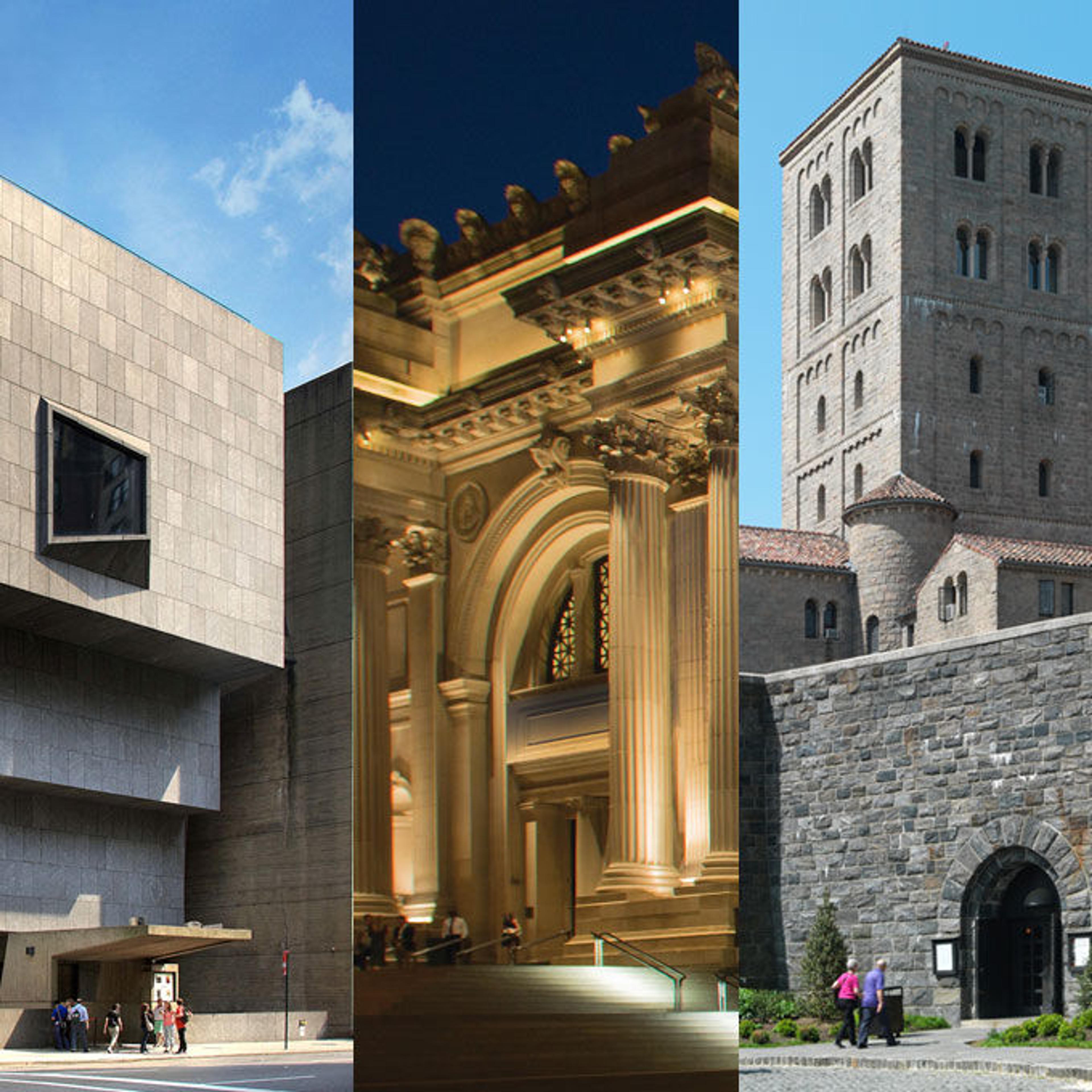Above, from left to right: Ik-joong Kang (American, b. Korea, 1960) 25 Wishes, 2007–2008. Tempera, Polymer Compound on Wood; each panel 23 in. x 23 in. Lent by the artist. Moon Jar, Joseon dynasty (1392–1910), 2nd half of 18th century. Porcelain. The Metropolitan Museum of Art, New York, The Harry G. C. Packard Collection of Asian Art, Gift of Harry G. C. Packard, and Purchase, Fletcher, Rogers, Harris Brisbane Dick, and Louis V. Bell Funds, Joseph Pulitzer Bequest, and The Annenberg Fund Inc. Gift, 1975 (1979.413.1).
«When I first saw 25 Wishes (above, left) in the Chelsea studio of the artist Ik-joong Kang nearly a year ago, my first thought was how wonderful it would look in the Met's Korean gallery.» I was very taken by the piece's subtle, alluring palette and dreamy quality. It was a surprising departure from most of Ik-joong Kang's other works, which burst with splashy color. The work filled the whole wall on which it was displayed, in a small room within Kang's studio, and reflected light coming from the floor-to-ceiling window it faced. So even though the piece is quite large, the viewing experience was intimate and inviting. But powerful. I wanted to recreate a bit of that feeling in the installation in our Arts of Korea Gallery.
Like many works in Kang's oeuvre—for example, the Happy Buddha series—25 Wishes is an installation comprising multiple, same-sized panels, each repeating a single image. In this case, the image is a moon jar, an iconic type of Korean porcelain ware from the eighteenth century. This iconography certainly engaged me further. I thought, "Why not pair this very contemporary, almost Warhol-esque work with the lovely eighteenth-century Moon Jar in our permanent collection (above, right), which is both traditional and modern in its aesthetic?" I decided to create a minimalist installation in the Korean gallery that centers on 25 Wishes and our Moon Jar, alongside a group of white porcelains from the Met's Korean collection. James Watt, chairman of the Asian Art Department, suggested including a group of thirty-four porcelain epitaph tablets and arranging these rectangular tablets in rows, in essence mimicking the hypnotic repetition of the panels in 25 Wishes. This is the first time the epitaph set has been displayed in its entirety, and the striking installation transforms them into abstract art.
Juxtaposing Kang's 25 Wishes against traditional Korean art—ceramics, in particular—suggests a particular cultural context in which to view and understand this contemporary work—and conversely, a context in which to reevaluate or contemplate anew the traditional art. No doubt a work like 25 Wishes would have a very different impact if presented in an entirely different setting—for example, in a room with other contemporary art.
Next Tuesday at 11:00 a.m., and again on Tuesday, April 13, I’ll be joined by the artist to discuss the creative process behind 25 Wishes and our thoughts on eighteenth-century moon jars, Korean porcelain, and the dialogue between traditional and contemporary Korean art.
Soyoung Lee is associate curator in the Department of Asian Art.
Related Installation
Contemplations on the Moon Jar
Through May 16, 2010 Arts of Korea Gallery, 2nd Floor
Upcoming Events
Gallery Talk: Arts of Korea: Contemplations on the Moon Jar
Tuesday, March 9, and Tuesday, April 13, 11:00 a.m., Arts of Korea Gallery, 2nd Floor
Associate Curator Soyoung Lee discusses 25 Wishes with the artist Ik-joong Kang. Free with Museum admission.
